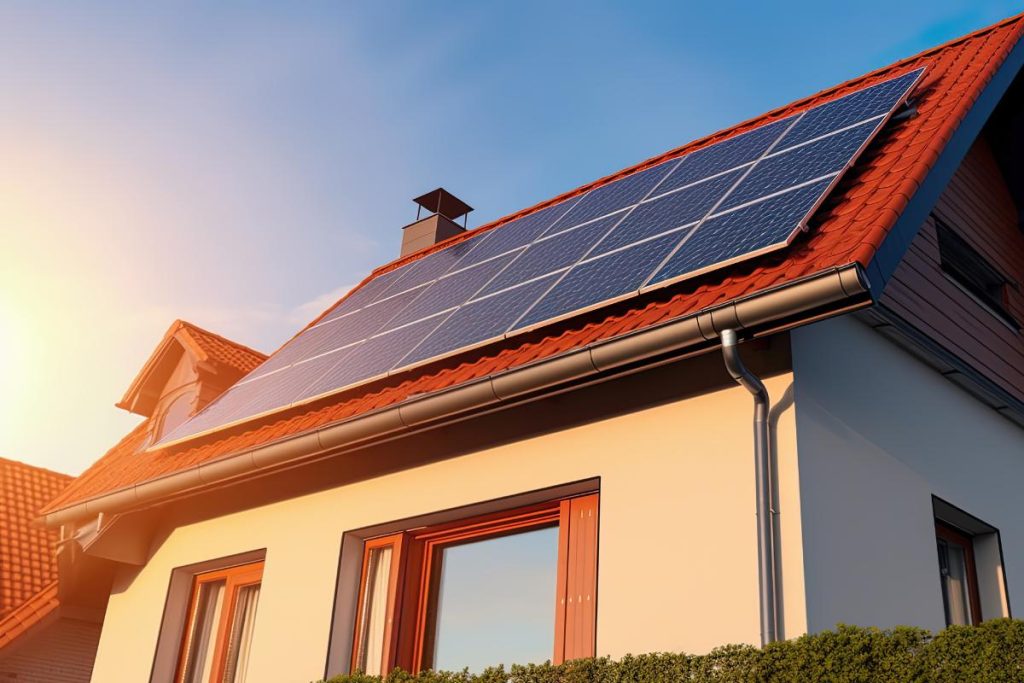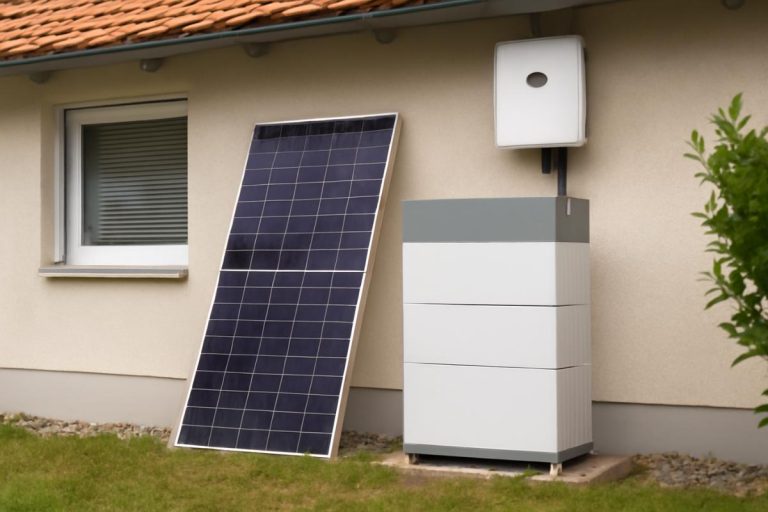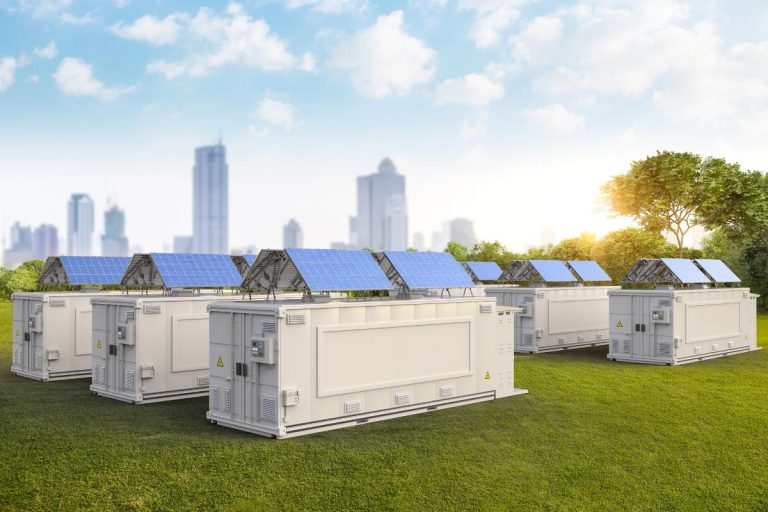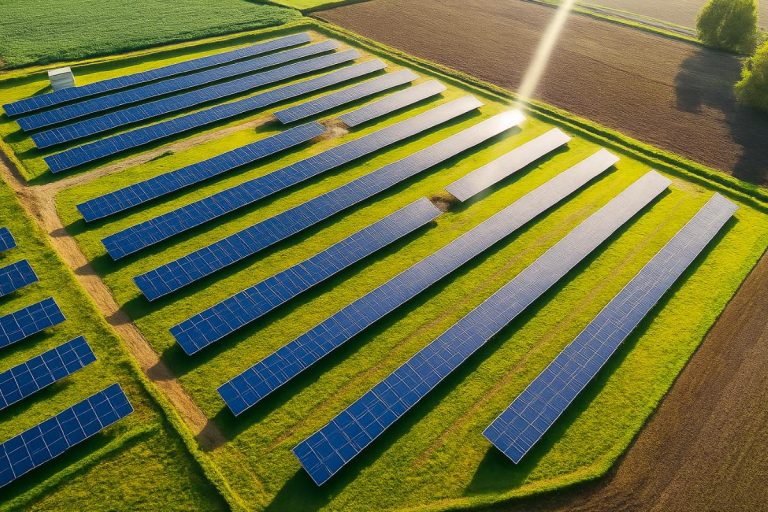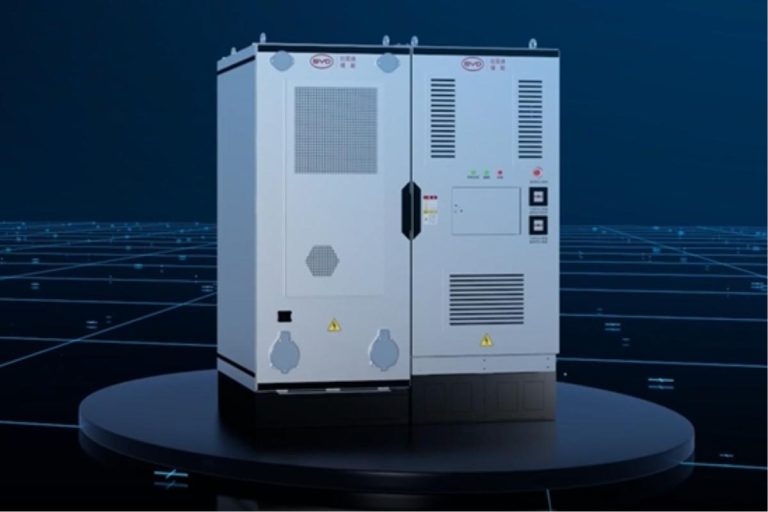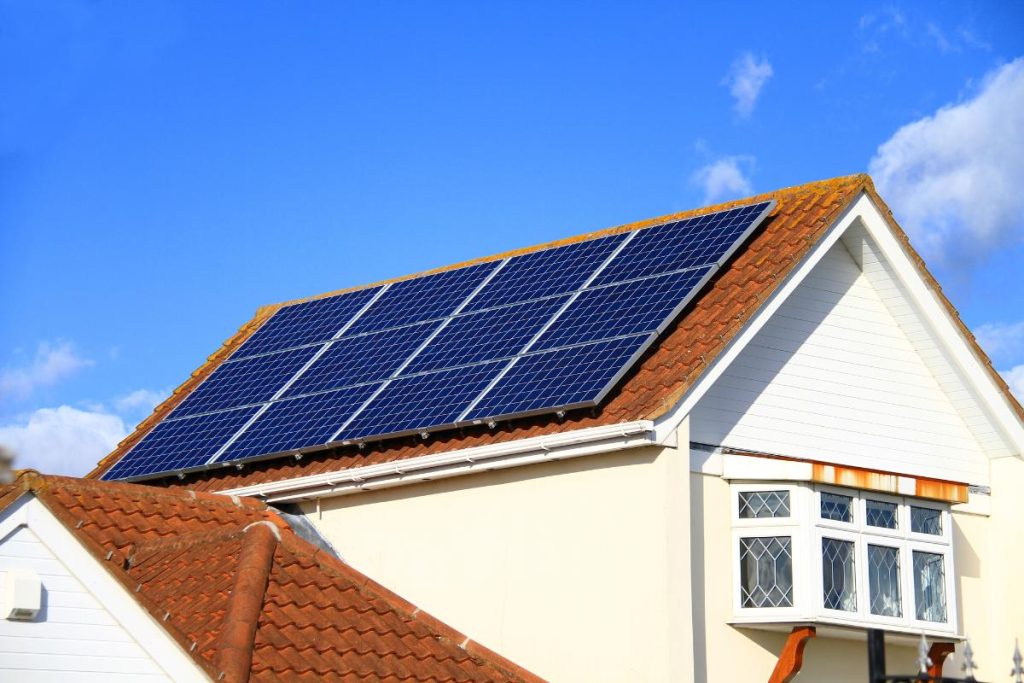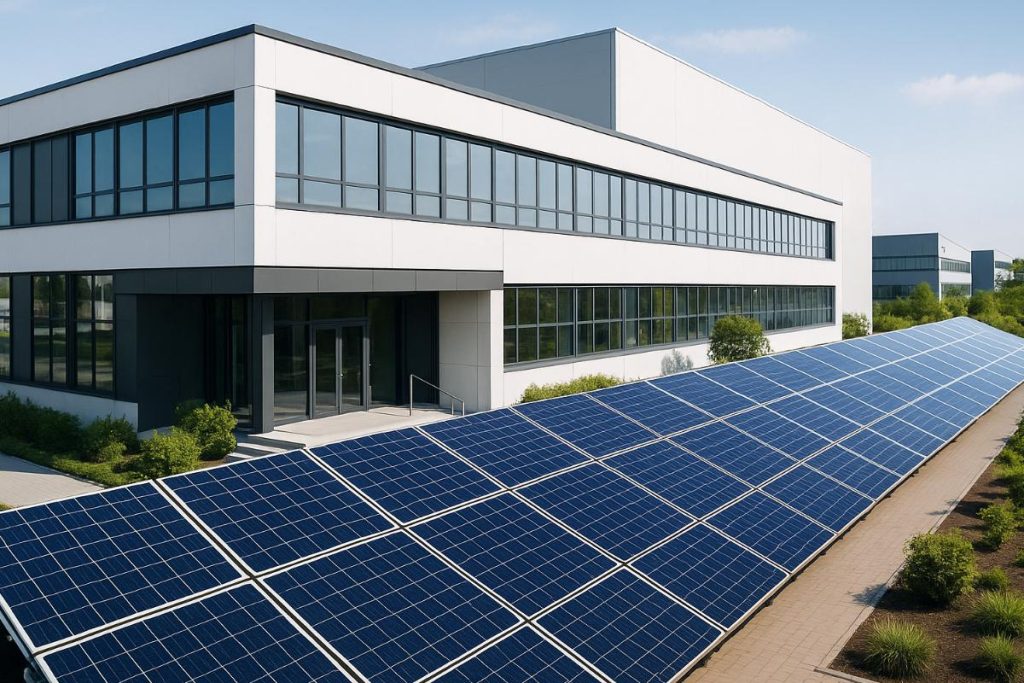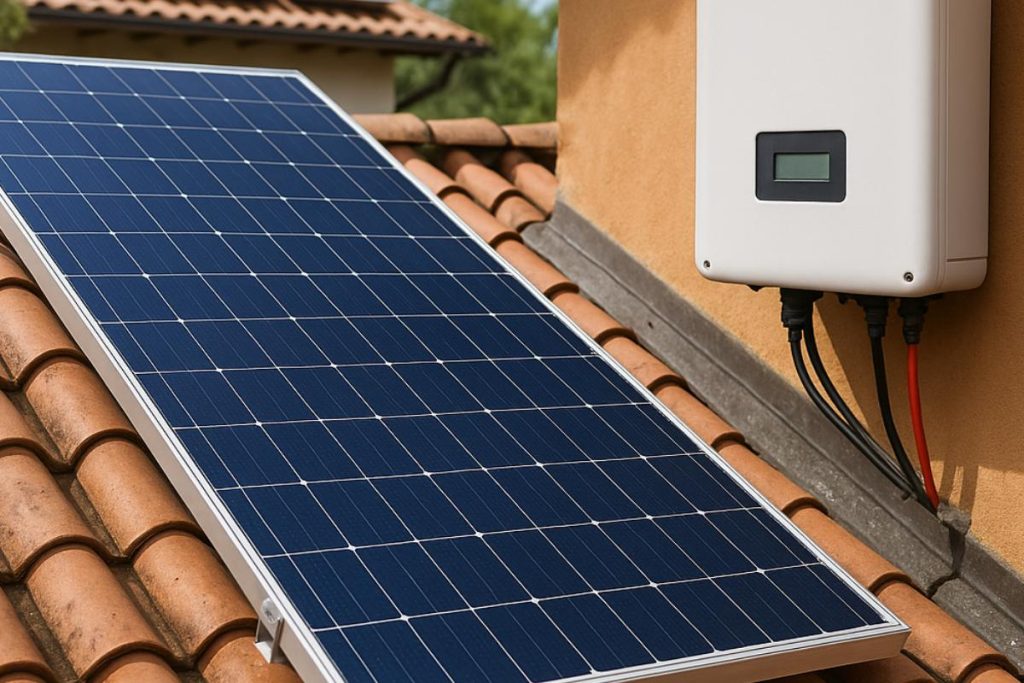The search for cleaner and more efficient energy alternatives is increasingly present in the daily lives of companies and homes. Among the options available on the market, the hybrid solar energy system stands out for combining the best of both worlds: solar energy and battery storage, with the possibility of integration into the electricity grid.
In this post, we'll explain what this system is, how it works, what its advantages are and when it's worth investing in this type of solution.
What is a hybrid solar energy system?
The hybrid solar energy system is a solution that combines two energy sources: the energy generated by solar panels and the energy stored in batteries. It also connects to the conventional electricity grid. In other words, it is a system capable of supplying energy even when there is no sun and also when the electricity grid is unavailable.
This flexibility makes the hybrid system ideal for those looking for more autonomy and energy security, without sacrificing savings on their electricity bills.
Difference to conventional systems
Conventional solar energy are divided into two main types: on-grid (connected to the grid) and off-grid (autonomous, with batteries). In the on-grid model, the solar energy generated is used during the day and the surplus is sent to the electricity grid. At night or on cloudy days, the property uses energy from the utility company. In the off-grid system, the energy generated is stored in batteries and used when necessary, being totally independent of the electricity grid.
Understand more how solar energy works.
The hybrid system, on the other hand, combines the two solutions. It allows you to use the solar energy generated during the day, store the surplus in batteries and, when necessary, use energy from the electricity grid. This guarantees greater autonomy and stability, especially in places with frequent power outages.
How does the hybrid solar energy system work?
The hybrid solar energy system combines solar panels, batteries and connection to the electricity grid. It uses solar energy during the day, stores the surplus in batteries and, if necessary, consumes it from the grid, guaranteeing savings and supply even during power outages.
Main components
To work properly, the hybrid system needs some specific equipment. The main ones are the photovoltaic modules, which capture the sun's energy; the hybrid inverter, responsible for converting and managing the energy between the sources (solar, batteries and the electricity grid); and the batteries, which store the surplus energy for later use.
Other important components are the load controllers, protection panels and the monitoring system.
Step-by-step operation
During the day, solar panels capture sunlight and generate electricity. This energy is primarily used to power the home or business. At night or on cloudy days, when there is little or no solar generation, the system uses the energy stored in the batteries.
Daytime operation
During the day, photovoltaic solar panels, made up of solar cells, capture solar radiation and convert sunlight into direct current (DC) electricity. This DC energy is then processed by a solar inverter, which transforms it into alternating current (AC) electricity, compatible with household appliances and the electricity grid.
The AC energy generated by the solar panels is primarily used to power the loads in the home or business. If the energy generated exceeds instant consumption, the surplus is used to charge a battery bank, usually made up of lithium-ion batteries, which store the energy for later use.
If the batteries are fully charged and there is still a surplus of solar energy, the system can inject this energy into the utility grid via a bidirectional meter. This injected energy generates energy credits, which can be used to reduce grid consumption at times of low or no solar generation.
Operation at night and on cloudy days
At night, or on cloudy and rainy days, when solar radiation is insufficient to generate energy or generation is nil, the system automatically uses the energy stored in the batteries to power the loads in the house or business.
If the batteries run out and the demand for energy is not met, the system automatically connects to the utility grid to supplement the energy supply, ensuring uninterrupted operation of the loads.
Intelligent and automatic management
The entire energy management process, from capturing sunlight to using the energy stored in the batteries or in the electricity grid, is carried out automatically and intelligently by a charge controller, which constantly monitors solar generation, the charge level of the batteries and the energy consumption. energy consumptionThis ensures maximum efficiency and the best use of solar energy.
Types of hybrid systems
Not all hybrid systems are the same. There are variations that adapt to different needs and consumption profiles. The two main types are All-in-One and Bi-Modal systems.
All-in-One system
The All-in-One system is an integrated solution that brings together all the main components in a single compact unit. It usually includes the inverter, battery charger and electrical protection devices. It is a practical option, easy to install and suitable for small residential or commercial systems.
Bi-Modal System
The Bi-Modal system is more flexible and modular. It allows separate components to be installed and can be adapted to larger projects. The main advantage of this model is that it can be scaled according to demand, making it ideal for companies, condominiums or rural properties with high consumption.
Advantages of the hybrid system
The hybrid solar energy system is a complete and advantageous solution for those looking for savings, sustainability, energy autonomy and property appreciation. With its many benefits, the system is an excellent option for homes, companies, industries and rural properties, contributing to a cleaner and more sustainable future.
Energy autonomy and security
One of the main advantages of a hybrid solar energy system is the energy autonomy it provides. Thanks to the combination of solar panels and batteries, the system guarantees a continuous supply of energy, even in the event of a mains power failure.
This feature is essential to guarantee the functioning of essential equipment in homes, companies and industries, such as security systems, medical equipment, servers, household appliances and refrigeration systems, avoiding financial losses and damage to people's health and safety.
Economy and sustainability
Saving on electricity bills is one of the main attractions of the hybrid system. By generating their own energy from the sun, consumers significantly reduce their dependence on the electricity grid and, consequently, their electricity costs.
In addition, the surplus energy generated can be injected into the grid through compensation systems, generating credits that can be used to reduce consumption in other periods. In the long term, the system pays for itself and generates significant savings.
As well as saving money, the hybrid system contributes to environmental sustainability. Solar energy is a clean, renewable source that does not emit greenhouse gases or pollutants, helping to reduce dependence on fossil fuels and combat climate change.
Property appreciation and return on investment
Installing a hybrid solar energy system adds value to a property, making it more attractive to buyers and renters. The presence of the system demonstrates concern for sustainability and economy, as well as offering practical benefits such as lower electricity bills and energy autonomy. Studies show that properties with solar energy tend to be sold or rented more quickly and for higher prices.
Investing in a hybrid solar energy system also has an attractive return. Despite the initial cost, the savings generated on electricity bills and the benefits of energy autonomy and sustainability make the investment worthwhile in the long term.
In addition, government incentives and lines of financing make it easier to acquire the system and make the return on investment even faster.
See how to save on your electricity bill with solar energy.
Other advantages
Low maintenance: hybrid solar energy systems require little maintenance, which reduces costs and makes operation easier.
Durability: the system's components, such as solar panels and batteries, have a long service life, ensuring that the system will function for many years.
Flexibility: the hybrid system can be adapted to the needs of each consumer, with different configurations of solar panels and batteries.
Remote monitoring: most hybrid systems allow remote monitoring of energy generation and consumption, making it easier to control and manage the system.
Taking care of your hybrid system
Despite the advantages, it is important to take care to ensure that the system works properly. Preventive maintenance should be carried out periodically, checking the condition of the batteries, electrical connections, the performance of the inverters and the cleanliness of the solar panels.
The choice of components must also be made carefully, always with expert technical advice. Low-quality equipment can compromise the system's efficiency and cause long-term damage.
When is it worth installing?
A hybrid solar energy system is particularly advantageous in a number of situations. Firstly, in places where the electricity supply is unstable or suffers from frequent interruptions, the hybrid system guarantees a continuous and reliable supply, avoiding losses and inconvenience.
Furthermore, in regions further away from urban centers, where access to the electricity grid is limited or non-existent, the installation of a hybrid system offers the possibility of having independent and self-sufficient electricity.
Even in urban areas, where access to the electricity grid is stable, the hybrid system can be an excellent option for those seeking greater energy autonomy and wishing to reduce their dependence on the conventional electricity grid.
If you're looking for security and reliability in your energy supply, want to save money in the long term and still contribute to a more sustainable future by reducing your carbon footprint and environmental impact, a hybrid solar energy system is a smart choice.
With it, you will have the peace of mind of a system that combines the best of solar energy and other sources, guaranteeing an efficient, economical and environmentally friendly energy supply.
The hybrid solar energy system is the best solution for savings, energy security and reducing environmental impacts
As we've seen throughout this article, the hybrid solar energy system offers a series of benefits ranging from savings on electricity bills to guaranteed supply in times of instability. It combines the advantages of on-grid and off-grid systems, providing a complete, sustainable and safe solution.
If you're looking for a modern, reliable system with cutting-edge technology, we recommend the BYD range. Our hybrid inverters stand out for their robustness, safety and efficiency.
The models BYD-S 3kW and 5kW HYBRID MONOFASIC 220V have AFCI protection, which automatically detects and shuts down the system in the event of electrical arcs, preventing fires. In addition, they have a backup function, guaranteeing back-up power for essential loads during outages.
The models BYD-S 8kW and 10kW HYBRID THREE-phase 380V offer integrated AC/DC protection, with protection against overvoltages, shorts and overheating. Another distinguishing feature is remote monitoring, which makes it easy to monitor power generation and system performance in real time.
Wondering if a hybrid system is right for you? Talk to an expert e make a personalized simulation!

